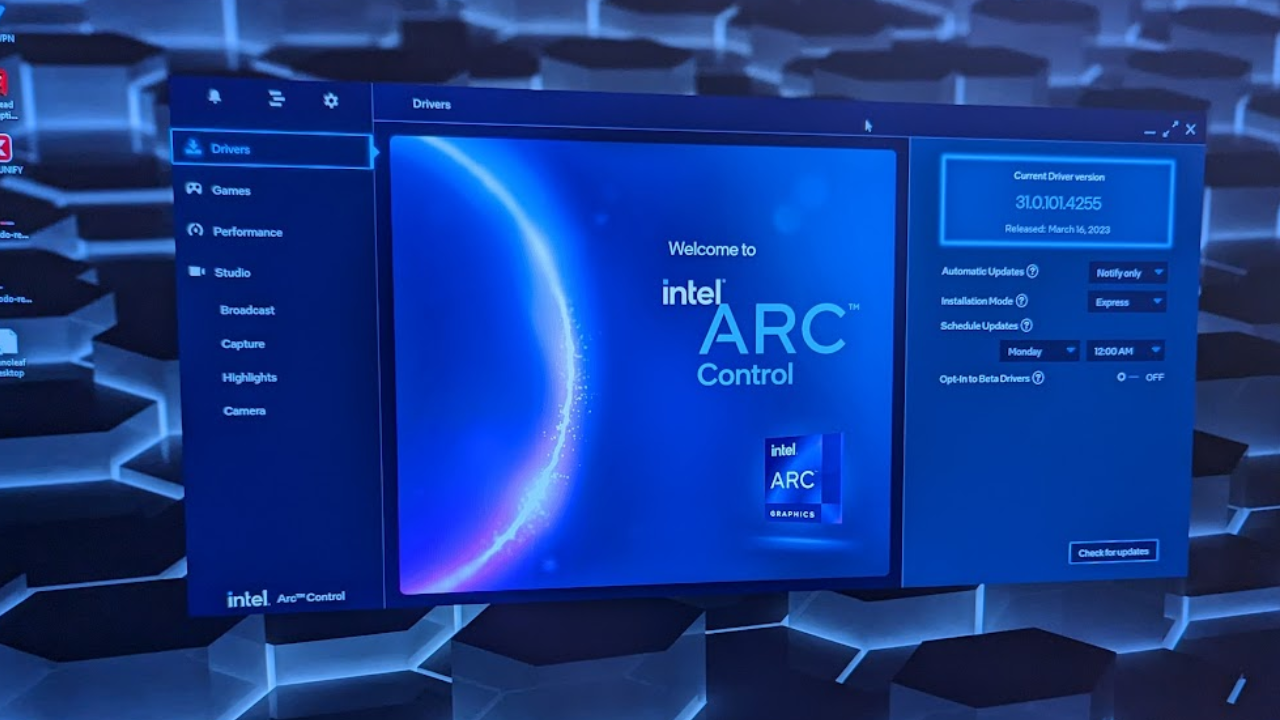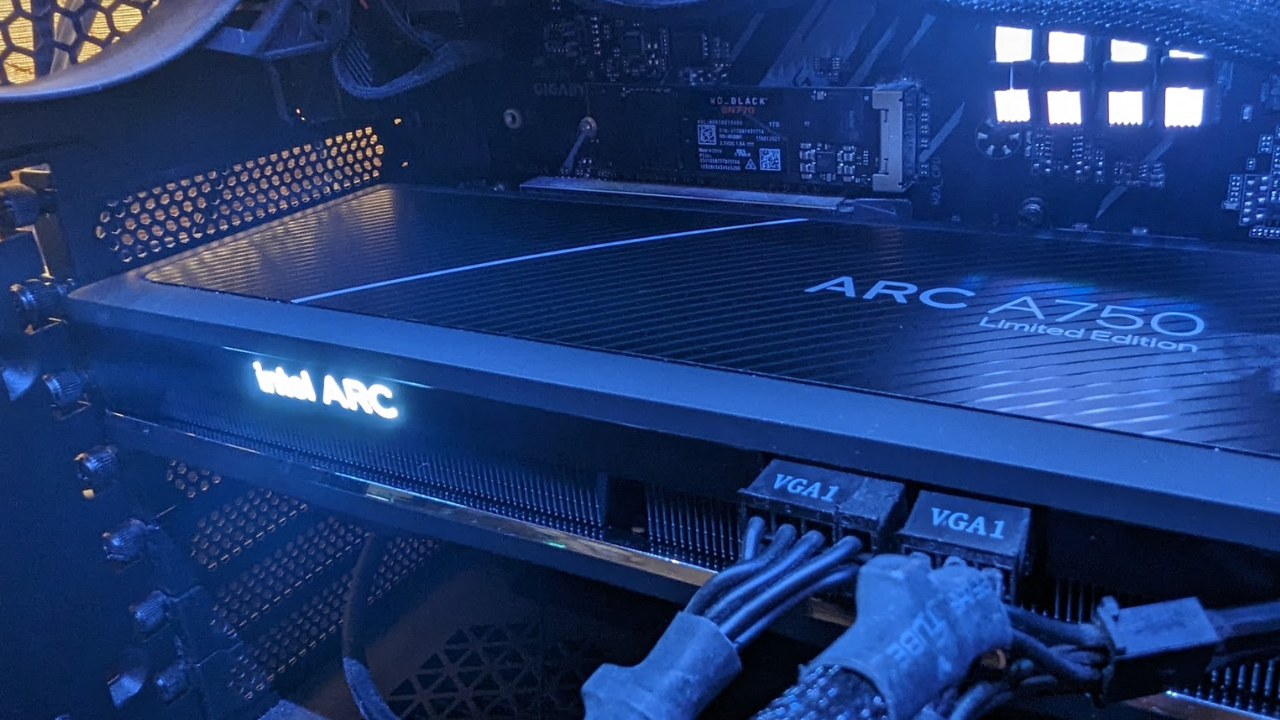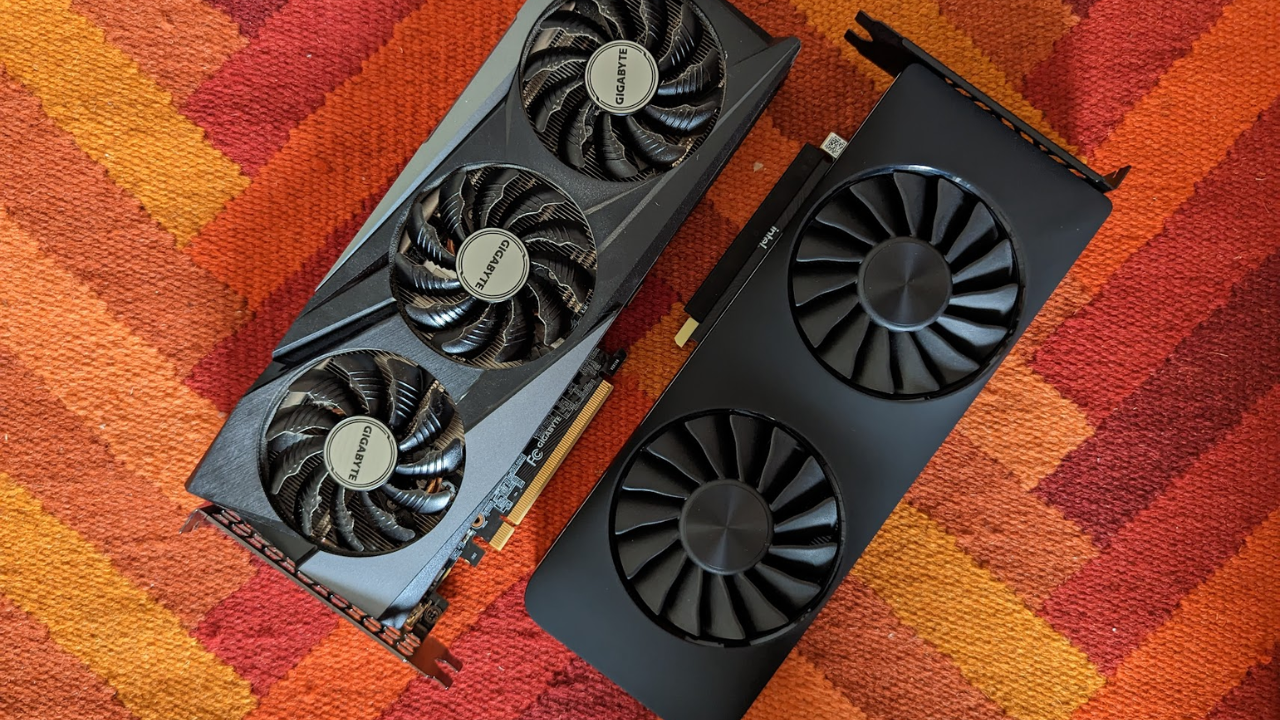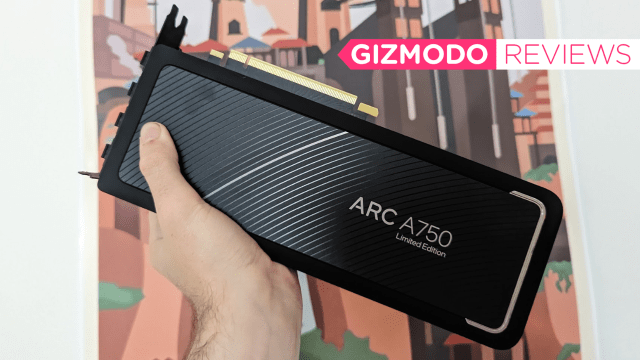The Intel Arc A750 graphics card has been a long time coming, and although I’ve been excited for it for years, it has left me very disappointed.
I’ve nothing but love for Intel’s efforts to enter the GPU market. Dominated by AMD and Nvidia as a duopoly, computer users stand to gain from increased competition. A third player means, hopefully, increased tensions for greater performance and lower costs. This is what made me so excited for Intel’s NUC 12 mini PC in November 2022 (which boasted an A770M).
But Intel’s entrance into the dedicated GPU market, at a consumer level, feels like a classic retread of the early adopters’ curse. Low uptake, numerous bugs and limited readily-available fault-finding solutions make the card difficult to consider seriously, when you can simply buy a card from either Nvidia or AMD and have more readily available support or solutions for any potential problems.
While the Intel range of graphics cards are competitively priced against AMD and Nvidia rivals, the card has very obvious teething issues, having been released in October 2022. Though I noticed performance improvements over my RTX 3060 in some games, such as Resident Evil 4 Remake and Forza Horizon 5, my experience with the Intel Arc A750 was defined by what went wrong.
And this isn’t a controversial take – early reviews of the Arc range were dominated by performance criticisms, and now I can add my voice to the chorus. Intel has reportedly made improvements since the launch of the Arc range, which is certainly a positive, but obviously, it’s not an ideal situation in the first place.
Before we dive in, though, you might be here because you Googled: intel arc blue screen of death, intel arc bsod, intel arc xmp not working, intel arc resize bar not working, or intel arc rollback drivers, and while I don’t have answers for these (half the problem), I can share my experience. Welcome to the fun.
Let’s get cracking.
Intel Arc A750 enters the ring
Let’s preface here that the Intel Arc A750 is largely Intel’s answer to the Nvidia RTX 3060, one of the most popular graphics cards in the world, and a worthwhile card to consider if you don’t want to spend too much money on a gaming PC. To get it out of the way early, my PC specs are as follows:
- Gigabyte Aorus B550M motherboard
- 32GB Corsair DDR4 RAM
- Nvidia RTX 3060 12GB (Gigabyte aftermarket) – this was obviously swapped with the Intel Arc A750 for the review
- AMD Ryzen 5 3600 processor
- 1TB SSD boot drive, with three side drives.
The main configuration, the RTX 3060 and the Ryzen 5 3600, are some of the most common components in the world, as the latest Steam hardware survey would indicate.
Since the Arc A750’s launch, it has widely been reported that performance is about on par with its Nvidia-made rival, while undercutting the cost quite a bit. On Scorptec, the cheapest Arc A750 is $399, while the cheapest RTX 3060 is $479, though 3060’s as low as $429 are available on sale now, as the card has been out for much longer (since July 2021).
I want to mention tech specs and price considerations early because, as we’re talking about custom build PCs here, I don’t want to discredit the research done by other writers and tech enthusiasts. It’s obvious that the Intel Arc A750 has worked fine for some builds, and that for others like me, it has anomalous and infuriating behaviour.
This review is less about the numbers and more about the overall experience.
In my time with the Intel Arc A750, the card caused a boot loop for my PC, rendering it unusable due to bluescreens and failure to post until I physically swapped out the boot hard drive (solved by an $80 SSD purchase that I wasn’t expecting to make). This bluescreen was onset by a GPU conflict with my RAM and a failed Windows 11 update.
A problem that I had early on with the card was Resize BAR support – a feature that boosts your framerate by allowing for a handshake between the CPU and GPU VRAM to leverage available resources. Fortunately, after the card bricked my computer with the earlier-mentioned boot loop, this problem was resolved with a clean installation and refresh… But then the problems evolved.
Never had this much trouble installing a GPU, but I needed to update the BIOS of my mb to get Resize Bar support – didn’t realize id need it but here we are 1 hour later pic.twitter.com/JyqNhdspXm
— BLM | Zachariah Kelly (@ZachariahK_) March 24, 2023
The earlier mentioned conflict between the GPU and RAM meant that I was unable to use the PC without disabling XMP (Extreme Memory Profile) – a memory feature developed by Intel that boosts RAM up to its optimal speed. If I enabled XMP, the PC would blue screen after not too long. XMP is a fairly common setting to have enabled on Windows so it’s honestly quite concerning that I ran into an issue like this. After I disabled XMP, things went fine, but without my RAM operating at its ideal clock speed.
And these are before any minor misgivings, of which the Arc has many. On every startup (via the Intel Arc Control app), Intel prompts an annoying administrator privileges request. Additionally, the Intel Arc Control app offers vague descriptions of things in a difficult-to-navigate app, and is nowhere near as refined as Nvidia’s GeForce Experience.

Support in individual games for the Intel Arc range is also limited (with lower performance a noted feature in older games like CS:GO), but we can obviously forgive Intel for this, as it’s a new range, competing against two giants that have been in the industry since its inception. Intel is making improvements on this, but they’re not there yet.
Oh, and with this many issues, I’m not even sure where to put this problem: the drivers aren’t in a good place, as exemplified by a single game. We’ll get into benchmarking in the next section, but I need to highlight very specifically the latest driver update for the Intel Arc A750, which brought in support for Resident Evil 4 on March 23, but broke Overwatch 2 for me. The game simply could not perform at above 20fps consistently unless I spent nearly 10 minutes after each launch reconfiguring the settings – and even after this, it would fail at exceeding a consistent 70fps.
To overcome this I rolled the card’s drivers back to a December release, which immediately fixed the problems. I’m not sure why this worked. I’ve reported this problem to Intel, but it’s a bad look.
Alright, let’s talk benchmarking.

90-second smackdown
Here’s how the card performed in four different games (recording frame rate averages).
- Resident Evil 4
- 120fps with FidelityFX enabled at 1080p (RTX 3060 result: 110fps)
- 90-100fps with FidelityFX disabled at 1080p (RTX 3060 result: 90fps)
- 60-70fps with FidelityFX disabled at 2K (RTX 360 result: 80-90fps)
Resident Evil 4 is the newest game on the list and exemplifies how the card tackles a new release with new drivers. The results were satisfying, and although optimal framerates were achieved with FidelityFX enabled, I didn’t mind the visual difference. Frame rate averages were gauged using the opening act, from the first movement to the escape from the cabin.
- Overwatch 2: 120fps on ‘ultra’ settings at 2K (RTX 3060 result: 120fps)
With Overwatch 2, I want to reiterate that I had to roll the drivers back to a December version to run at a framerate that wasn’t nauseating. With the most up-to-date drivers at the time, the game stuttered drastically between 10fps and 70fps. Frame rate averages were gauged over five games.
- Call of Duty: Modern Warfare 2 2022
- 108fps on ‘recommended performance’ settings at 1080p (RTX 3060 result: 109fps)
- 101fps on ‘recommended performance’ settings at 2K (RTX 3060 result: 91fps)
Call of Duty: Modern Warfare 2 2022 produced interesting results in its benchmarking application. While the cards were well balanced when operating at 1080p, the Arc A750 excelled when performing at 2K. Frame rate averages were gauged using the inbuilt benchmarking tool.
- Forza Horizon 5
- 85fps on ‘ultra’ at 2K (RTX 3060 result: 77fps)
- 100fps on ‘ultra’ 1080p (RTX 3060 result: 80fps)
Forza Horizon 5 is a deeply demanding racing game, and in an identical test, the Arc A750 outperformed the RTX 3060 on both 1080p and 2K resolutions. Frame rate averages were gauged using the inbuilt benchmarking tool.
These results meet my expectations and give the Intel Arc A750 a silver lining. Roughly, the Arc A750 performs at the level of the RTX 3060, with some variances at play in specific games at different resolutions.

Punchout
I’m anticipating the day when I can wholeheartedly recommend purchasing the Intel Arc A750, or a potential follow-up to this card, but unfortunately, that is not today. There are teething issues that Intel has not resolved just yet, and not to sound alarmist, but if I’m likely to encounter the issues outlined above, then so are you.
You shouldn’t buy the Intel Arc A750 at the moment, but you also shouldn’t swear off the Arc range entirely. As far as I can tell, this is a classic cautionary tale about buying new technology and the first model in a new series.
The Intel Arc A750 has the potential to be the best budget-oriented graphics card and undercut both AMD and Nvidia. It’s just not ready yet, but I have a feeling that they’re close.
Where to buy the Intel Arc A750
Note that aftermarket A750 GPUs are also available.
